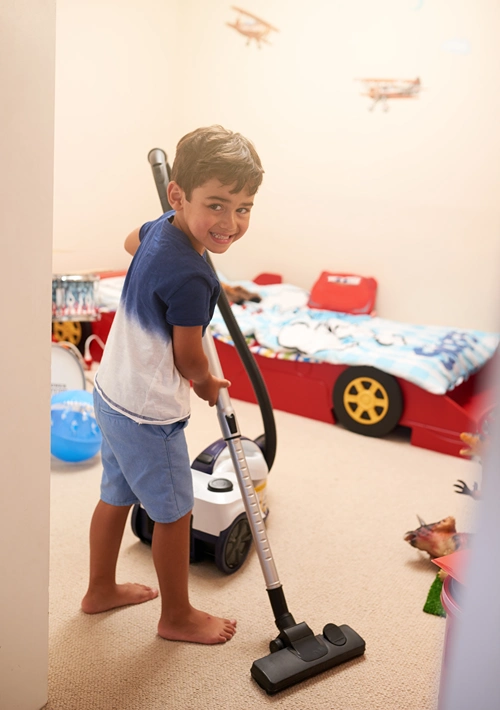8 Essential Steps for Improving Academic Excellence in Catholic Schools
How can Catholic schools continue to nurture well-rounded students while pushing for academic excellence? It’s not just about textbooks and test scores—it’s about creating an environment where students thrive academically, spiritually, and emotionally.
Whether you’re a principal aiming to lead with purpose, a teacher passionate about inspiring your class, or a parent wanting the best for your child, improving academic standards is a shared goal.
1. Accreditation: Setting the Stage for Improvement
Think of accreditation as a roadmap. It’s not just about checking boxes or meeting requirements—it’s about taking a close look at how your school operates and figuring out how to make it even better. The process digs into everything from school policies and teaching methods to the overall learning environment.
Why is this important? Because it helps ensure that all the moving parts work together to support students in the best possible way. For Catholic schools, accreditation also makes sure that both academic goals and faith-based values are being met. It’s about making sure your school isn’t just doing well but continuously striving to do better. Take the time to learn more about accreditation – find out the options available and what it means for your school. It’s well worth it.
2. Leading with Purpose: The Power of Strong Leadership
Great schools have strong leaders—but leadership isn’t just about the principal’s office. It’s about creating a team of people who are passionate about making a difference. When leaders at every level—whether that’s department heads, veteran teachers, or student council advisors—set clear goals and foster collaboration, the entire school community benefits.
In Catholic schools, leadership goes beyond academics. It’s about modeling kindness, integrity, and service. Investing in leadership development, offering mentorship opportunities, and encouraging open communication can transform how a school operates and how students experience learning.
3. Empowering Teachers: Professional Development That Matters
Teachers are the heart of any school. When they’re inspired and equipped with fresh ideas, it shows in the classroom. But professional development shouldn’t just be a once-a-year seminar. It should be ongoing, practical, and relevant to what teachers face every day. Imagine workshops that offer real strategies for engaging students or collaborative sessions where teachers share what’s working in their classrooms. In Catholic schools, it’s also valuable to include training on how to seamlessly weave faith into everyday lessons, creating a classroom environment that nurtures both intellect and spirit.
4. Creating a Supportive Learning Environment
Students do their best when they feel supported, respected, and safe. A positive learning environment doesn’t just happen—it’s intentionally built. Catholic schools are uniquely positioned to foster communities where kindness and respect are more than just words on a poster.
Simple practices like greeting students by name, celebrating small victories, and encouraging empathy go a long way. And it’s not just about what happens in the classroom. School-wide initiatives, from peer mentoring to community service projects, can strengthen connections and make every student feel like they belong.
5. Partnering with Families and the Community
Education is a team effort. When families are involved, students benefit from consistent support both at school and at home. Catholic schools often have strong community ties, which makes it easier to get parents engaged—but it’s important to keep those connections active and meaningful. Hosting family nights, sending out regular updates, and inviting parents to volunteer or share their skills can make a real difference.
6. Using Data to Make Informed Decisions
Data isn’t just about test scores—it’s a tool to better understand how students are doing and how to help them improve. Regular assessments provide insights into what’s working and where adjustments are needed. For example, if data shows that a group of students is struggling with reading comprehension, teachers can tailor lessons to address that gap.
7. Bringing Faith into the Curriculum
Catholic schools have something special to offer: an education that develops both the mind and the soul. Integrating faith into everyday lessons isn’t just about religion classes—it’s about showing students how values like compassion, honesty, and service apply in all areas of life. For instance, science lessons can explore the beauty and complexity of creation, while history classes can spark discussions about justice and human dignity.
8. Putting Students at the Center of Learning
No two students are exactly alike—so why should their learning experiences be? Student-centered teaching focuses on engaging learners through hands-on activities, real-world applications, and opportunities to explore their interests. This approach encourages curiosity and critical thinking, making lessons more memorable and meaningful.
In Catholic schools, this can be taken a step further by incorporating service-learning projects where students apply classroom knowledge to community initiatives. It’s about helping students not only gain knowledge but also develop the skills and values they’ll carry with them long after graduation.
Building a Legacy of Excellence
Improving academic excellence in Catholic schools isn’t just a one-time effort—it’s an ongoing journey that involves everyone. By focusing on strong leadership, engaging teaching methods, supportive environments, and meaningful partnerships with families and the community, schools can create a nurturing space where students flourish. When academics and faith work hand in hand, students are equipped not just to succeed in school, but to lead lives of purpose, kindness, and integrity. The steps may take effort, but the results—confident, compassionate, and capable young people—are well worth it.



 Author bio: Cora Gold is the Editor-in-Chief of women’s lifestyle magazine,
Author bio: Cora Gold is the Editor-in-Chief of women’s lifestyle magazine, 





